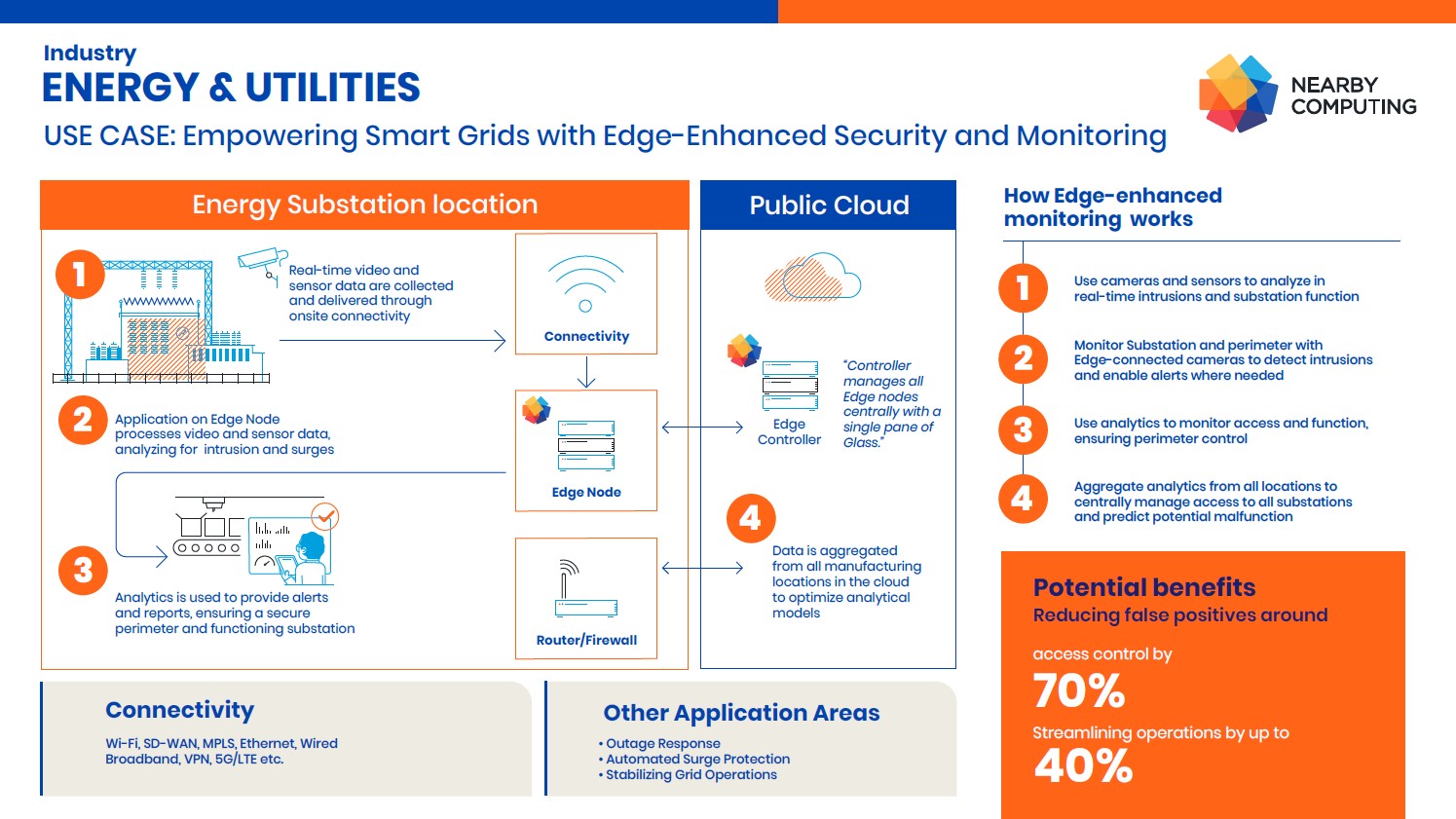Blog | nearby computing
Edge-Enhanced Security and Monitoring – A Focus for the Energy and Utilities Industry
Energy suppliers operate across various fields and locations, frequently managing assets in remote areas lacking onsite personnel. Improved security and monitoring at the edge are critical in the energy and utilities sector for multiple reasons, including facilitating real-time monitoring, reduced latency, and better security measures.
These advancements contribute to ensuring the reliability and efficiency of energy management systems. Leveraging edge computing technologies for security and monitoring significantly lowers the risk of data breaches and unauthorized access, providing an additional safeguard for security and privacy.
In particular, the advent of the smart grid within this industry has garnered interest from various power providers due to its integration of digital communication and real-time data analytics to optimize power usage and decrease operational expenses. Ensuring quality control is of utmost importance in the energy and utilities sector to guarantee the reliability, safety, and efficiency of power generation, transmission, and distribution processes.
The strategic deployment of coordinated edge devices facilitates their swift establishment in these new settings, equipped with necessary computing power while diminishing maintenance efforts and expenses.
Utilizing edge analytics can significantly lower the dependence on high-cost broadband connections between onsite assets and cloud infrastructures. The ability to remotely deactivate edge compute IO is key in averting unauthorized system installations. It is also vital to ensure that both employees and external service providers have secure and audited access to these remote infrastructures, enhancing oversight and control.
However, stakeholders face challenges in maintaining high-quality standards, including monitoring, predictive maintenance, and adherence to cybersecurity regulations in decentralized environments. The strength of edge-enhanced security and monitoring lies in its ability to address these issues through seamless integration with an automated and comprehensive NearbyOne orchestration platform. This platform is tailored for latency-sensitive, data-intensive, and mission-critical applications.

CIOs Need to Consider Edge-Enhanced Security and Monitoring
Adopting security and monitoring solutions at the edge offers significant benefits that Chief Information Officers (CIOs) cannot overlook. These technologies not only improve the security posture and operational efficiency of energy systems but also have profound implications for reliability and customer service.
Reduced false positives in access control by utilizing localized computing at the edge, enabling more precise and real-time analysis that accurately differentiates between legitimate activities and potential security threats.
Enhanced system performance by streamlining operations, which facilitates the automation of routine tasks and optimization of various processes. This results in better operational efficiency through the more effective allocation of resources.
Heightened customer satisfaction and trust in energy providers by delivering faster response times to outages, ensuring a more stable energy supply, and enabling more efficient use of renewables.
Improved sustainability by optimizing operations supporting the energy sector’s shift towards more sustainable practices. This leads to reduced energy consumption, lower carbon emissions, and alignment with global sustainability objectives.
Bolstered regulatory compliance through real-time monitoring and reporting capabilities, ensuring system reliability, cybersecurity and minimizing environmental impact.
Consider Integrating a Cross-Domain Orchestration Platform
The dynamic landscape of the energy sector demands innovative strategies for security and operational efficiency. For CIOs and solution architects working in this space, adopting edge-based security and monitoring solutions represents a strategic decision to meet modern challenges.
Stakeholders must conduct a comprehensive needs analysis to identify specific challenges associated with smart grid management and to assess the existing infrastructure. From this analysis, they must develop a detailed plan for full-scale implementation.
You can unlock the full potential of your edge-based security and monitoring through collaboration with Nearby Computing. With the help of NearbyOne, we offer organizations the ability to leverage the cross-domain orchestration platform.




